
Vendor audits are an essential part of managing your supply chain and ensuring the quality and compliance of your vendors. However, conducting a vendor audit can be a complex and time-consuming process. That’s where vendor audit checklists come in handy.
This guide will explore what a vendor audit checklist is, why it is important for your business, how to create one, tips for successful vendor audits, and provide an example of a sample checklist.
What is a Vendor Audit Checklist?
A vendor audit checklist is a document that helps you organize and conduct vendor audits efficiently. It is a comprehensive list of items that need to be reviewed and evaluated during the audit process. The checklist serves as a guide for auditors, ensuring that all relevant aspects of the vendor’s operations are assessed.
The checklist can be tailored to your specific industry, regulatory requirements, and business needs. It typically covers various areas such as quality control processes, production facilities, employee qualifications, environmental impact, and compliance with applicable laws and regulations.
Why are Vendor Audit Checklists Important?
Vendor audits are crucial for several reasons:
- Ensuring Quality and Compliance: Vendor audits help you verify that your vendors meet the required quality standards and comply with industry regulations. This is especially important when dealing with suppliers of critical components or materials.
- Identifying Risks: By conducting audits, you can identify potential risks and vulnerabilities in your supply chain. This allows you to take proactive measures to mitigate those risks and ensure a smooth and uninterrupted flow of goods and services.
- Building Trust: Vendor audits demonstrate your commitment to quality and compliance, which can help build trust with your customers and other stakeholders. It shows that you have a robust system in place for selecting and monitoring your vendors.
- Continuous Improvement: Audits provide valuable insights into your vendors’ operations, allowing you to identify areas for improvement. By sharing these findings with your vendors, you can collaborate to enhance processes, reduce costs, and improve overall performance.
How to Create a Vendor Audit Checklist
Creating a vendor audit checklist requires careful planning and consideration. Here are the steps to follow:
1. Define Audit Objectives
Start by clearly defining the objectives of your vendor audit. What are the specific areas you want to assess? What are the performance standards and compliance requirements? This will help you focus your audit efforts and ensure that the checklist covers all the necessary items.
2. Research Applicable Regulations and Standards
Research the relevant regulations and standards that apply to your industry and vendors. This will help you identify the specific requirements that need to be included in your checklist. Stay up-to-date with any changes or updates to ensure compliance.
3. Identify Key Focus Areas
Identify the key focus areas that are critical for your business and supply chain. This could include quality control processes, product specifications, employee qualifications, environmental impact, social responsibility, and more. Prioritize the areas that are most important to your business.
4. Develop Checklist Questions
Based on the audit objectives and focus areas, develop a set of specific questions that need to be answered during the audit. These questions should be clear, concise, and measurable. Use a combination of open-ended and closed-ended questions to gather the necessary information.
5. Organize the Checklist
Organize the checklist in a logical and structured manner. Group related questions together and ensure that the checklist flows smoothly. Consider using sections or categories to make it easier for auditors to navigate through the checklist.
6. Include Supporting Documentation
Include references to supporting documentation that auditors can use to gather evidence and verify compliance. This could include relevant policies, procedures, certifications, test reports, inspection records, and more. Make sure the documentation is easily accessible and up-to-date.
7. Review and Revise
Review the checklist for accuracy, completeness, and relevance. Seek feedback from relevant stakeholders, such as auditors, quality assurance personnel, and supply chain managers. Revise the checklist as necessary to address any gaps or improve clarity.
8. Test the Checklist
Before implementing the checklist, test it in a real-world scenario. Conduct a mock audit using the checklist to identify any potential issues or challenges. This will help you fine-tune the checklist and ensure its effectiveness.
Tips for Successful Vendor Audits
Here are some tips to ensure successful vendor audits:
- Establish Clear Communication: Communicate your audit requirements and expectations clearly to your vendors in advance. This will help them prepare and provide the necessary documentation and access to facilities.
- Conduct On-Site Visits: Whenever possible, conduct on-site visits to vendors’ facilities. This allows you to observe their operations firsthand and gather more accurate information.
- Follow Up on Findings: After the audit, follow up with your vendors to address any findings or non-compliance issues. Work together to develop corrective action plans and monitor their implementation.
- Maintain Documentation: Keep detailed records of all audit findings, corrective actions, and vendor performance. This will help you track improvements over time and provide evidence of compliance when needed.
- Regularly Review and Update: Review and update your vendor audit checklist regularly to reflect changes in regulations, standards, and business requirements. Stay proactive in ensuring the effectiveness of your audit process.
Example
Below are some examples of vendor audit checklists:

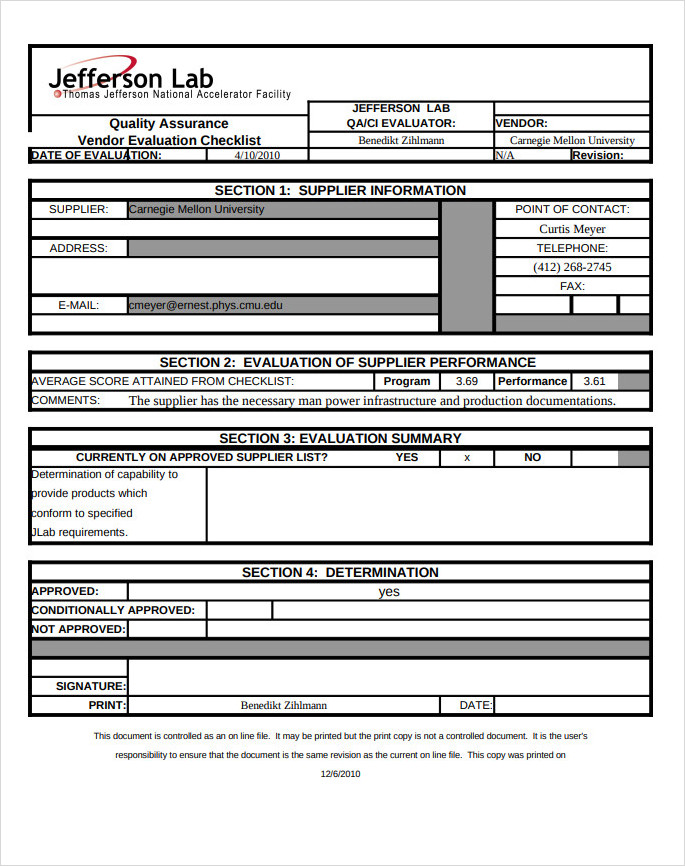
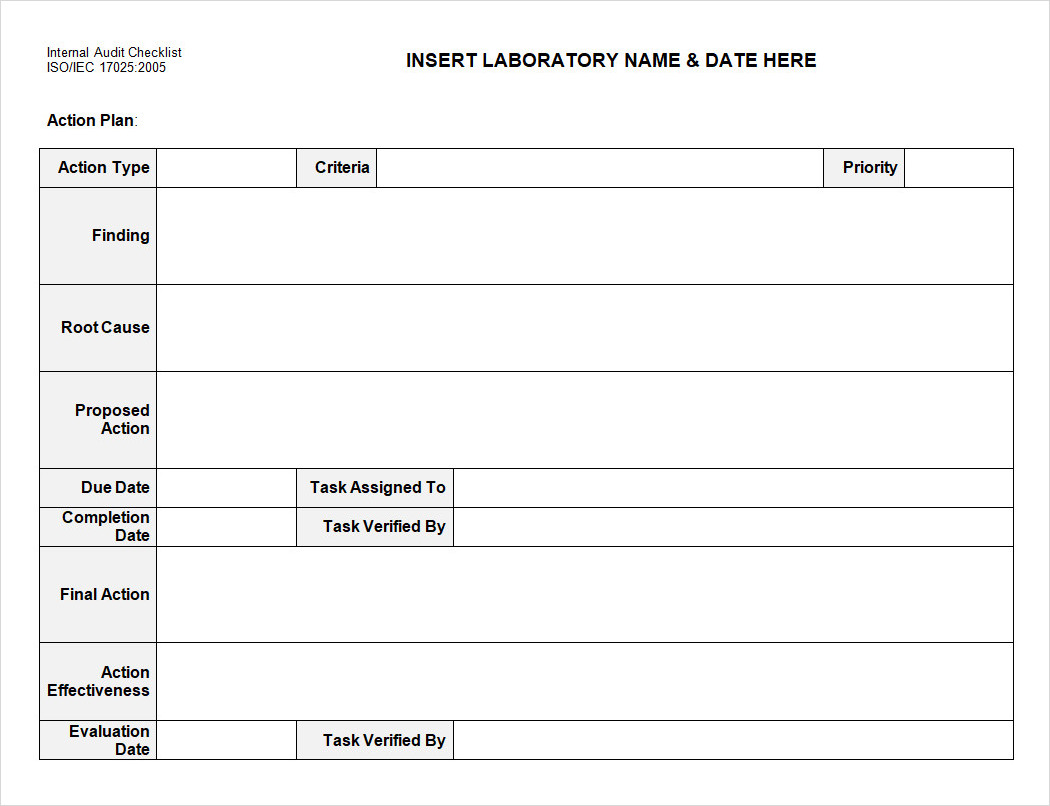
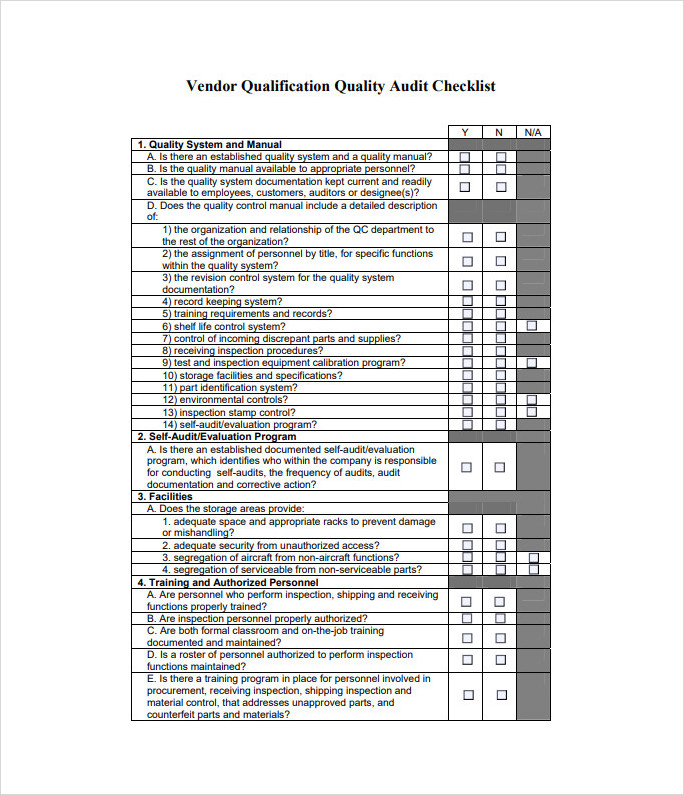
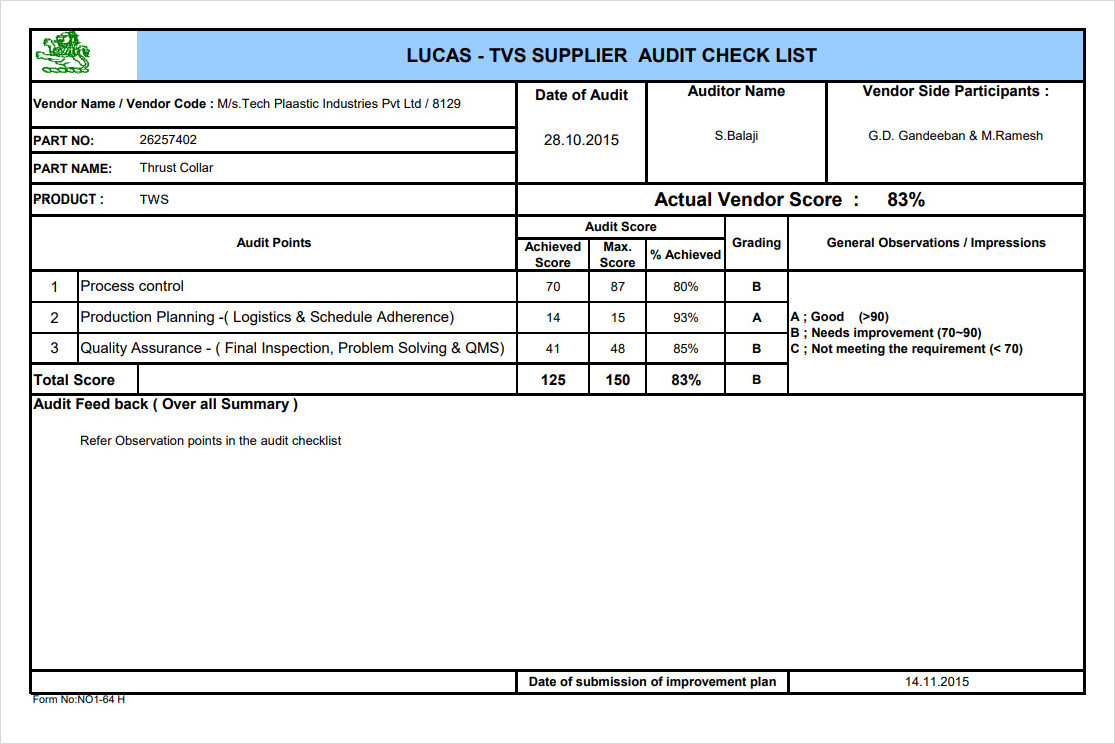
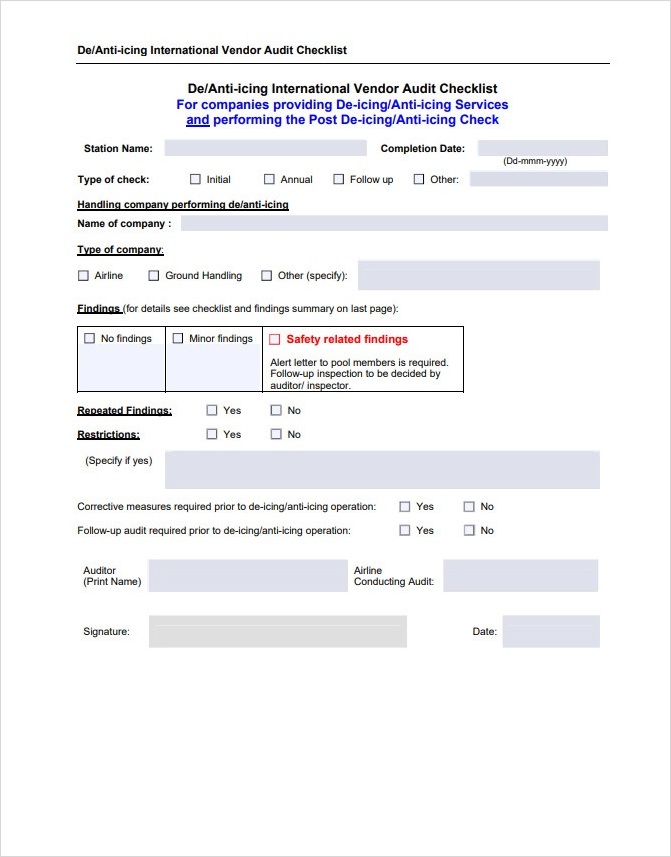
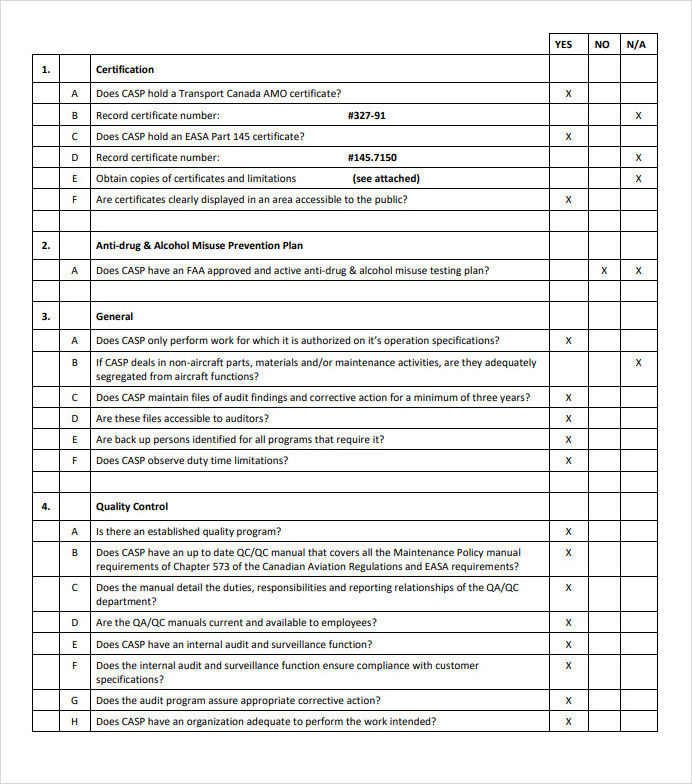
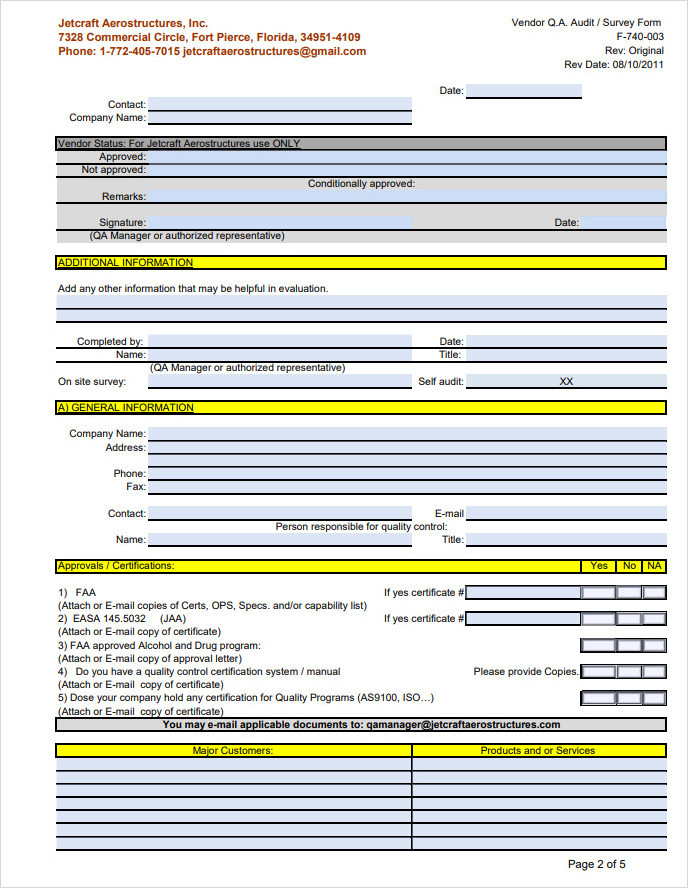
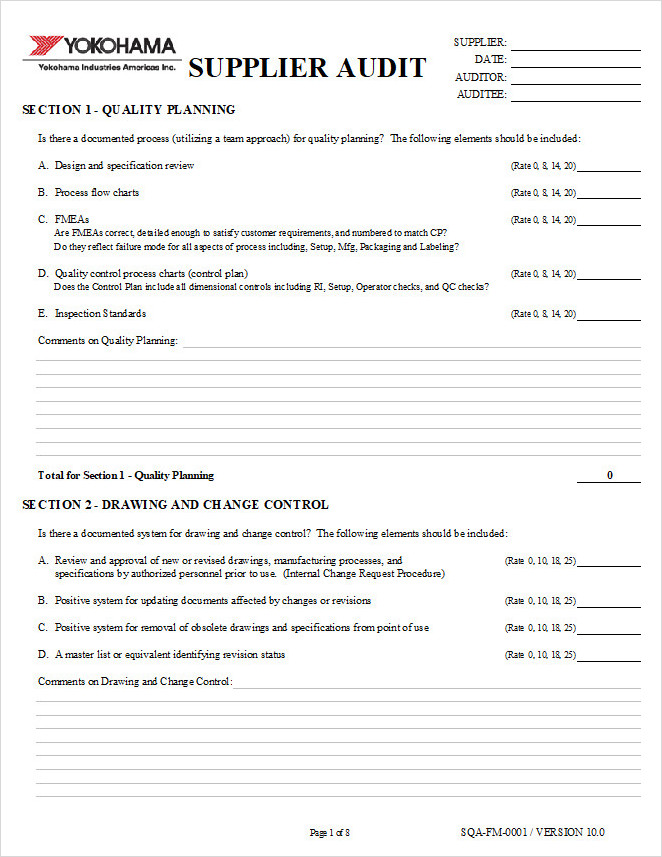
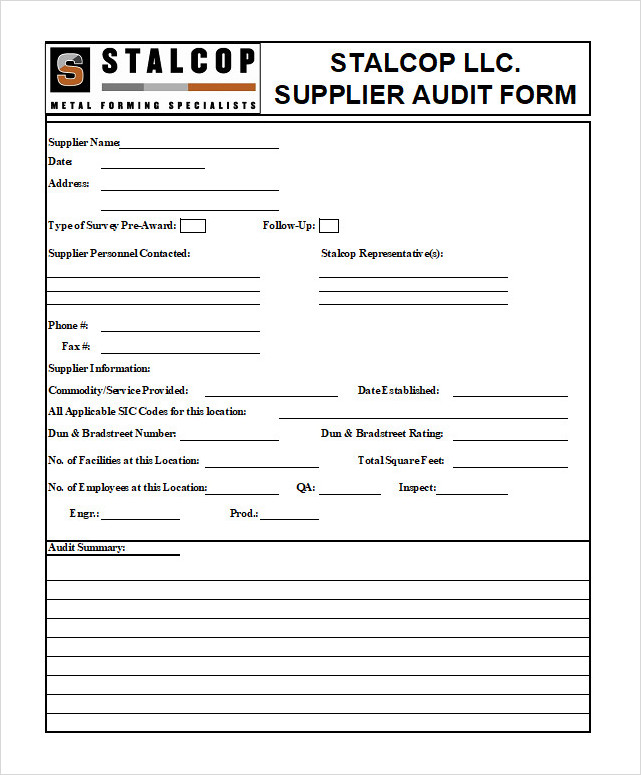
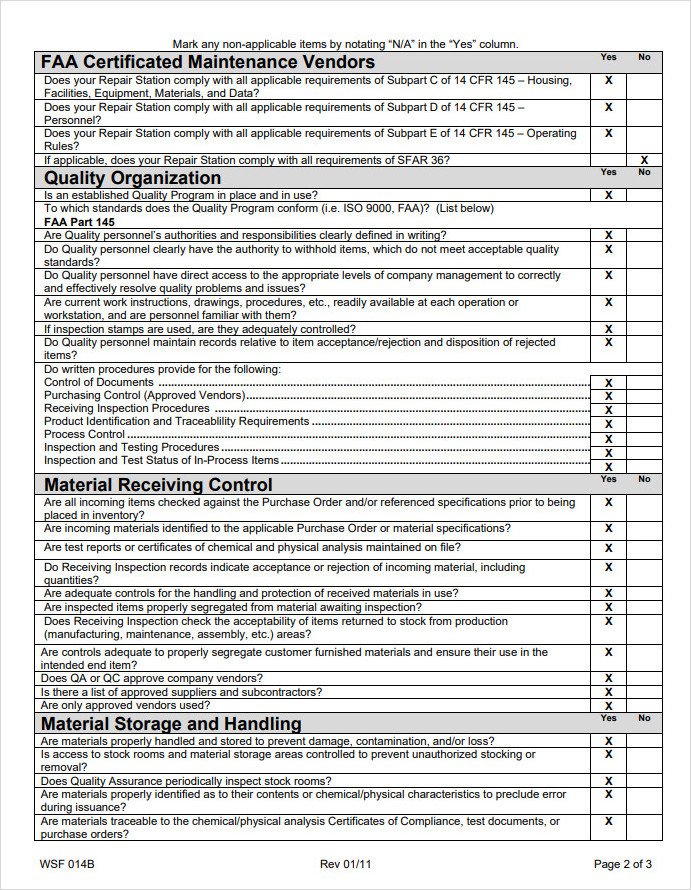
Free Vendor Audit Checklist Template!
Vendor audit checklists are valuable tools for managing and assessing the performance of your vendors. By following the steps outlined in this guide and using the provided sample checklist, you can conduct effective vendor audits, ensure quality and compliance, and strengthen your supply chain.
Remember to regularly review and update your checklist to adapt to changing requirements and industry best practices.
Vendor Audit Checklist Template – Download